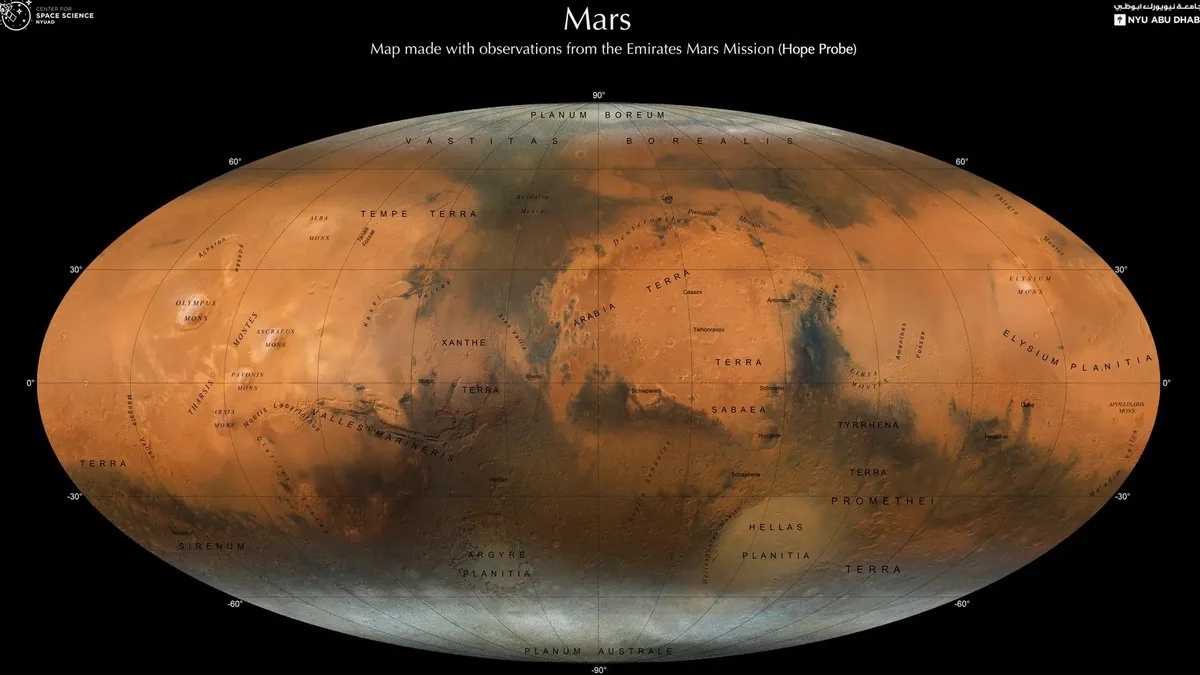4.10.2024
Hope spotted "discernible alterations on the surface" after the January 2022 event.

The United Arab Emirates' Hope mission orbits Mars on a elliptical orbit that provides the spacecraft with unique views. (Image credit: NYU Abu Dhabi)
New footage from Mars shows Red Planet dust reservoirs can send out huge clouds of material in a short time.
The Hope mission from the United Arab Emirates captured Mars images before and after a dust storm that show "discernible alterations on the surface," officials with the Hope mission wrote on X, formerly Twitter, on Friday (Dec. 29), alongside an animation.
The spacecraft plotted changes in surface dust thickness following a regional dust storm in 2022, in part using infrared spectrometer observations that can look at heat signatures on the surface of Mars, according to a paper based on the results published in the Journal of Geophysical Research: Planets in October.
The animation shows the spectrometer's estimates of changes in surface dust thickness in the Isidis Planitia region, highlighted in red. This zone is a vast impact basin that is known to be filled with dust.
Hope examined several regions after a dust storm in January 2022, the paper stated, including Syrtis Major, Isidis Planitia, Tyrrhena Terra, Hesperian Planum, and Elysium Planitia. The researchers aimed to put "constraints on the amount of dust that was either lifted from or deposited onto these regions," according to the paper.
"Although the regional dust storm was active over all the regions of interest, we found that dust may have been removed and subsequently deposited with varying levels of intensity in the regions sampled," the researchers added.
The spectrometer measurements suggested that some of the regions had a net removal of dust as high as 340 μm or micrometers, representing surface temperature changes that could be seen in the spectrum from orbit. Other regions had net deposition of up to 120 μm.
"Visible-wavelength imagery from the Emirates Exploration Imager, which is more sensitive to changes in surface dust distribution, is incorporated in our analysis to provide additional context," the researchers said. Their estimates thus revealed "dust reservoirs are capable of transporting vast quantities of dust over short timescales."
Quelle: SC
